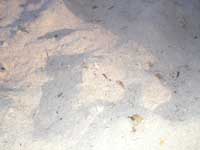1 May 2023
 Though ship breaking has earned a good reputation for being a profitable industry in developing countries there are a number of environmental and human health hazards. Depending on their size and function, scrapped ships have an unladened weight of between 5,000 and 40,000 tons (the average being 13000+), 95% of which is steel, coated with between 10 and 100 tons of paint containing lead, cadmium, organotins, arsenic, zinc and chromium. Ships also contain a wide range of other hazardous wastes, sealants containing PCBs, up to 7.5 tones of various types of asbestos and; several thousands liters of oil (engine oil, bilge oil, hydraulic and lubricants oils and grease). Tankers additionally hold up to 1,000 cubic meters of residual oil. Most of these materials have been defined as hazardous waste under the Basel Convention. In Bangladesh, ships containing these materials are being cut up by hand, on open beaches, with no consideration given to safe and environmentally friendly waste management practices.
Though ship breaking has earned a good reputation for being a profitable industry in developing countries there are a number of environmental and human health hazards. Depending on their size and function, scrapped ships have an unladened weight of between 5,000 and 40,000 tons (the average being 13000+), 95% of which is steel, coated with between 10 and 100 tons of paint containing lead, cadmium, organotins, arsenic, zinc and chromium. Ships also contain a wide range of other hazardous wastes, sealants containing PCBs, up to 7.5 tones of various types of asbestos and; several thousands liters of oil (engine oil, bilge oil, hydraulic and lubricants oils and grease). Tankers additionally hold up to 1,000 cubic meters of residual oil. Most of these materials have been defined as hazardous waste under the Basel Convention. In Bangladesh, ships containing these materials are being cut up by hand, on open beaches, with no consideration given to safe and environmentally friendly waste management practices.

Ships are not properly cleaned before beaching. Generally, an eyewash test is carried out to certify that a ship is free from dangerous chemical and fumes.
Ship breaking activities is a threat to both the terrestrial and marine environment as well as to public health. It is like a mini version of a city that discharges every kind of pollutants a metropolis can generate like liquid, metal, gaseous and solid pollutants.
Persistent Organic Pollutants (POP’s)
POPs are chemicals that are highly toxic, remain intact in the environment for long periods, become widely distributed geographically, bioaccumulate through the food web, accumulate in the fatty tissue of living organisms and pose a risk of causing adverse effects to the human population, wildlife and the environment. There has been a realization that these pollutants, upon exposure of human population, can cause serious health effects ranging from increased incidence of cancers to disruption of hormonal system. Ship breaking activities are a source of lethal POPs.
Asbestos

Asbestos was used in old ships as a heat insulator. As there are no asbestos disposal procedures, during scrapping, workers and the surrounding environment are exposed to the asbestos fibers. Exposure to asbestos fibers (even in very low concentrations) especially through inhalation may cause cancer and asbestosis. On the ship breaking beaches, asbestos fibers and flocks fly around in the open air. Workers take out asbestos insulation materials with their bare hands.
It has also proven to be one of the most lethal, as inhaling asbestos fibers can lead to a wide range of pulmonary problems such as asthma and asbestosis – and can also be the direct cause of mesothelioma.
Heavy metals
Heavy metals are found in many parts of ships such as in paints, coatings, anodes and electrical equipment. These are taken apart with no protective measures in place and reused. Exposure can result in lung cancer, cancer of the skin, intestine, kidney, liver or bladder. It can also cause damage to blood vessels.
Oil pollution

As a result of breaking the ships, oil residues and the other refuses are being spilled, mixed with the sea water and left floating along the entire seashore. Oil may cause serious damage in different ways, such as a reduction of light intensity beneath the water surface which inhibits photosynthesis. Oil films on water reduce the exchange of oxygen and carbon dioxide across the air-sea interface which is harmful to aquatic life. It also causes damage to the bird population by coating their feathers with oil which causes buoyancy and insulation losses. Sometimes spilling may cause wide spread mortality amongst the population of fish, mammals, worms, crabs, mollusks and other water organisms.
Impact of ship breaking on physiochemical properties of seawater

Ship scrapping activities pollute the seawater environment in the coastal area of Fauzdarhat to Kumira of Chittagong, Bangladesh. As a result, toxic concentration of ammonia, marine organisms found in seawater had an increase in PH levels. Extensive human and mechanical activities accelerate the rate and amount of seashore erosion and results in higher turbidity of seawater. Critical concentration of DO and higher BOD were found with an abundance of floatable materials (grease balls and oil films) in the seawater.
Impact of shipbreaking on inter-tidal sediments and soils
In shipbreaking areas various refuse and disposable materials are discharged and spilled from scrapped ships and often get mixed with the sand. The scraps from the ships are staked haphazardly on the sea shore, leaving behind an accumulation of metal fragments and rust (particularly iron) in the soil. These together with extensive human and mechanical activities often go on as matter of routine work resulting in the beach soil losing its binding properties and this accelerates the amount of shore erosion and increase the turbidity of sea water and sediments in the area.
Impact of ship breaking on biodiversity
Shipbreaking activities contaminate the coastal soil and sea water environment mainly through the discharge of ammonia, burned oil spillage, floatable grease balls, metal rust (iron) and various other disposable refuse materials together with high turbidity of sea water. The high PH of the seawater and soil observed may be due to the addition of ammonia, oils and lubricants. High turbidity of water can cause a decrease in the concentration of DO and substantially increase the BOD. Furthermore, oil spilling may cause serious damage by reduction of light intensity, inhibiting the exchange of oxygen and carbon dioxide across the air-sea water interface, and by acute toxicity. As a result the growth and abundance of marine organisms especially plankton and fishes may seriously be affected. Indiscriminate expansion of ship breaking activities poses a real threat to the coastal inter-tidal zone and its habitat.
Reproduced from the site Young Poweer in Social Action (YPSA)









